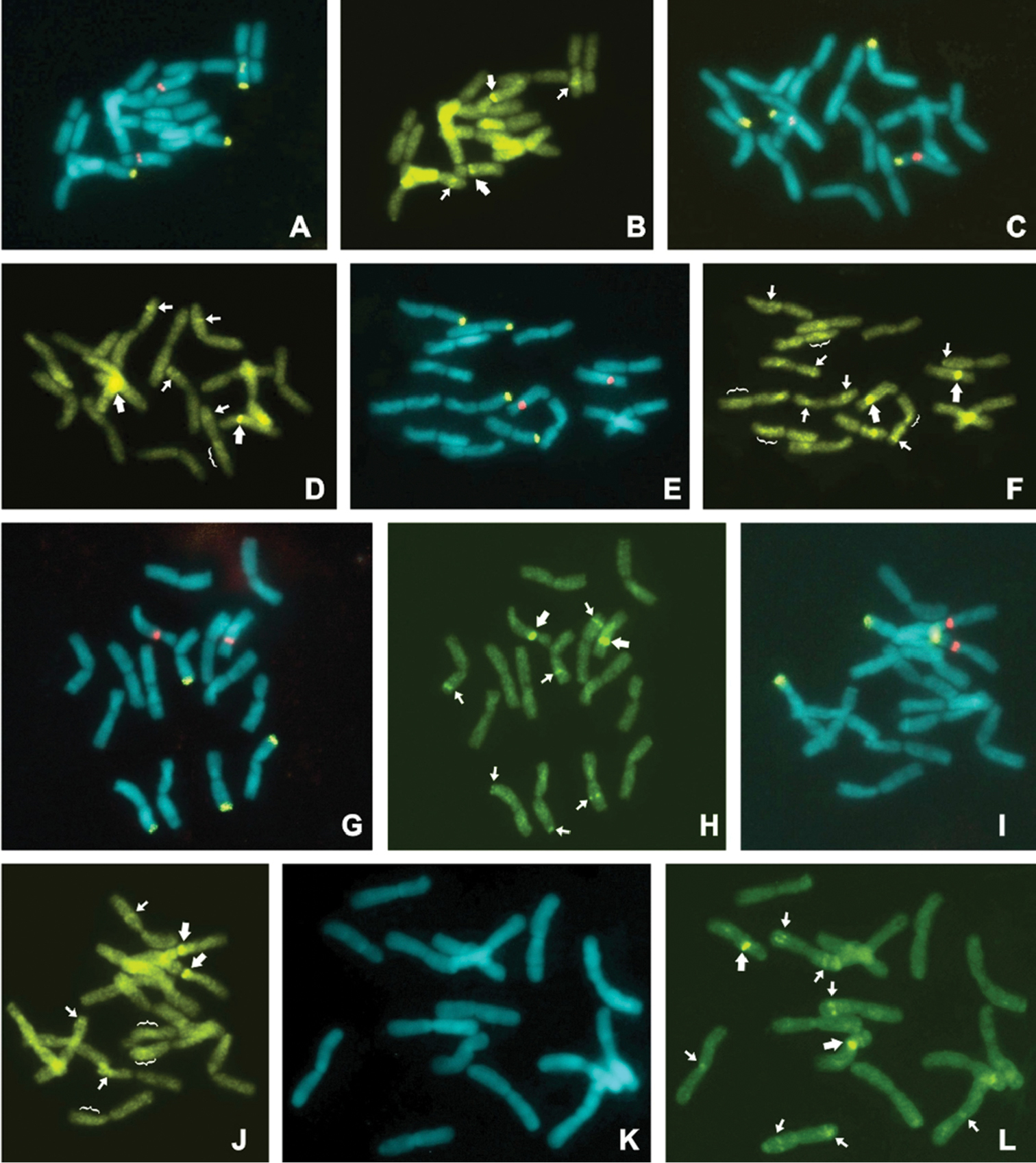
|
||
|
FISH showing the location of the 35S and 5S rDNA sites, and the diversity in the distribution of B probe signals in different species of Cestrum. All species showed four terminal 35S rDNA signals (green) and two proximal 5S rDNA signals (red). Note that in all cases, the 35S probe signals did not colocalize with B probe signals, but the 5S rDNA signals did with strong signals with B probe (large arrows). A–B C. sendtnerianum: the B probe also showed intercalary signals in one chromosome pair, without evidence of scattered hybridization signals. For other species C–D C. corymbosum E–F C. laevigatum, (Fig. 2D) G–H C. schlechtendalii I–J C. bracteatum (Fig. 2H) and K–L C. mariquitense, there was a variability in the number of intercalary hybridization signals (small arrows), besides small subterminal and terminal signals. Although all species showed scattered hybridization signals, it was more evident in chromosomes of C. laevigatum and C. bracteatum (brackets). The K image is only a conventional DAPI staining, without FISH with rDNA probes. Bar = 10 µm. |